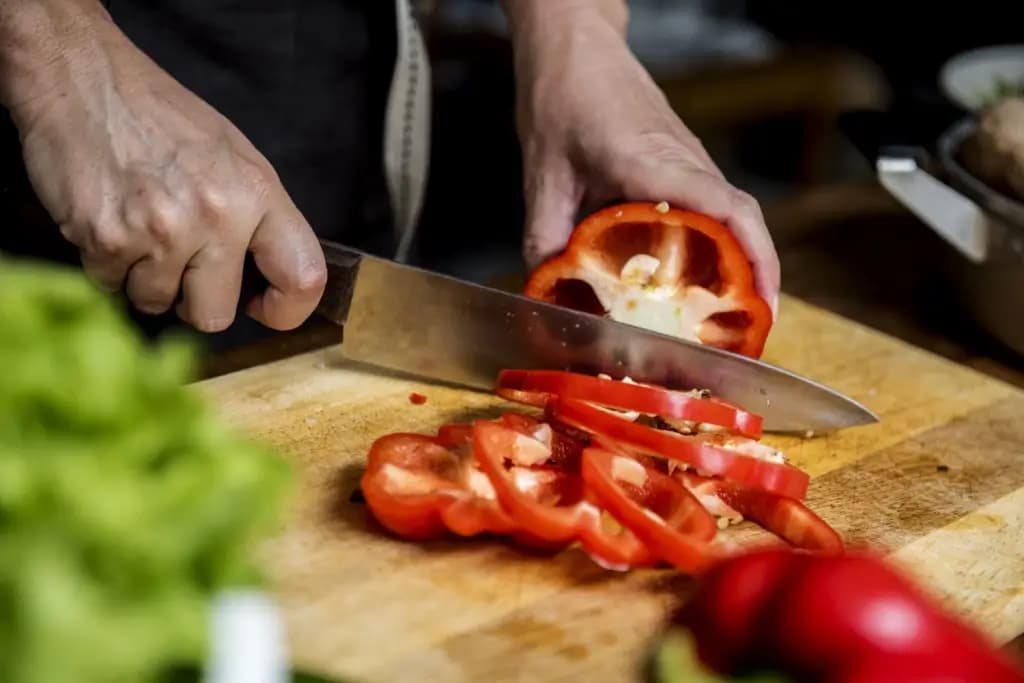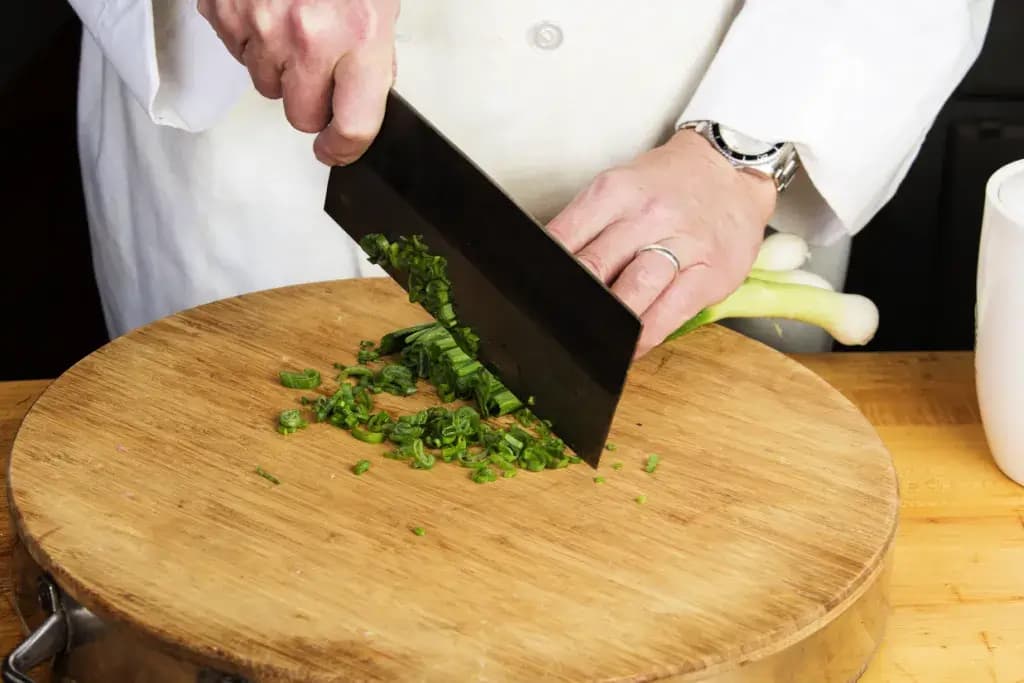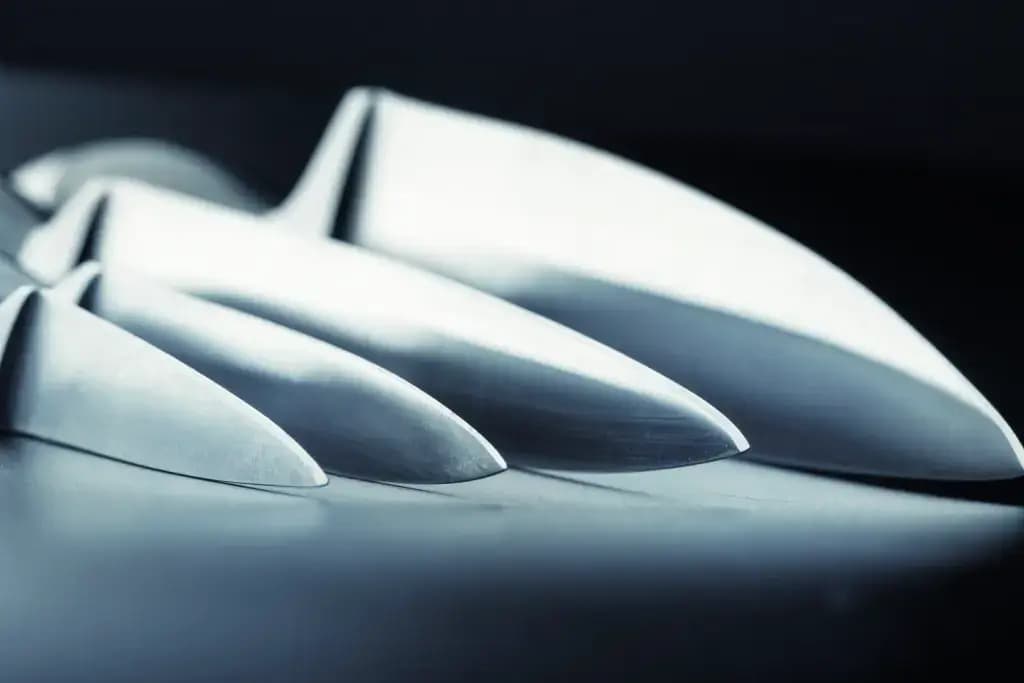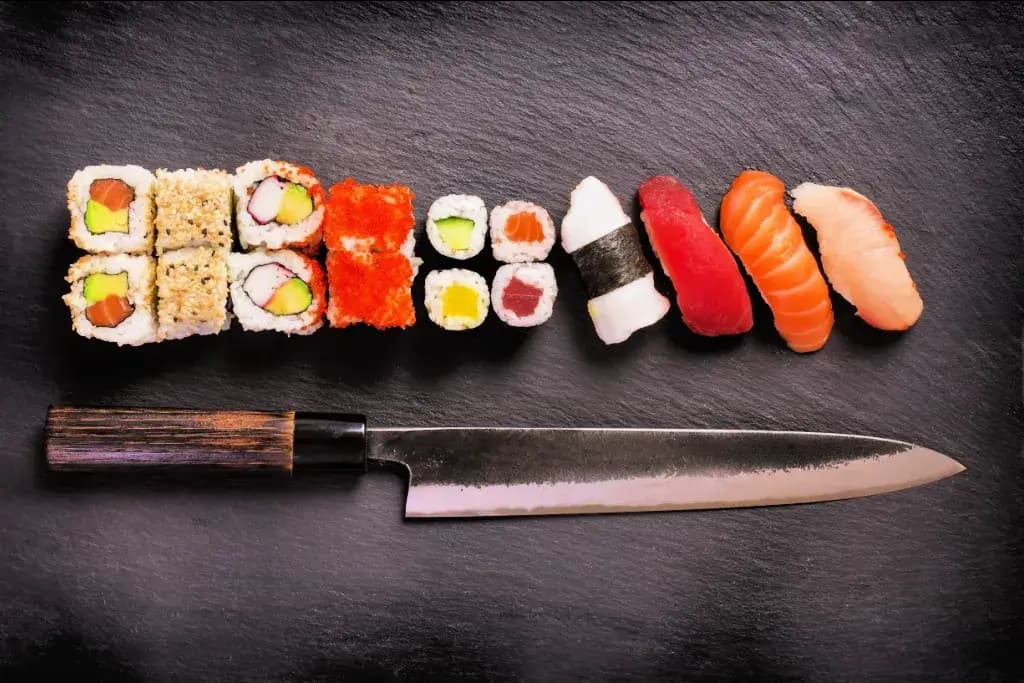
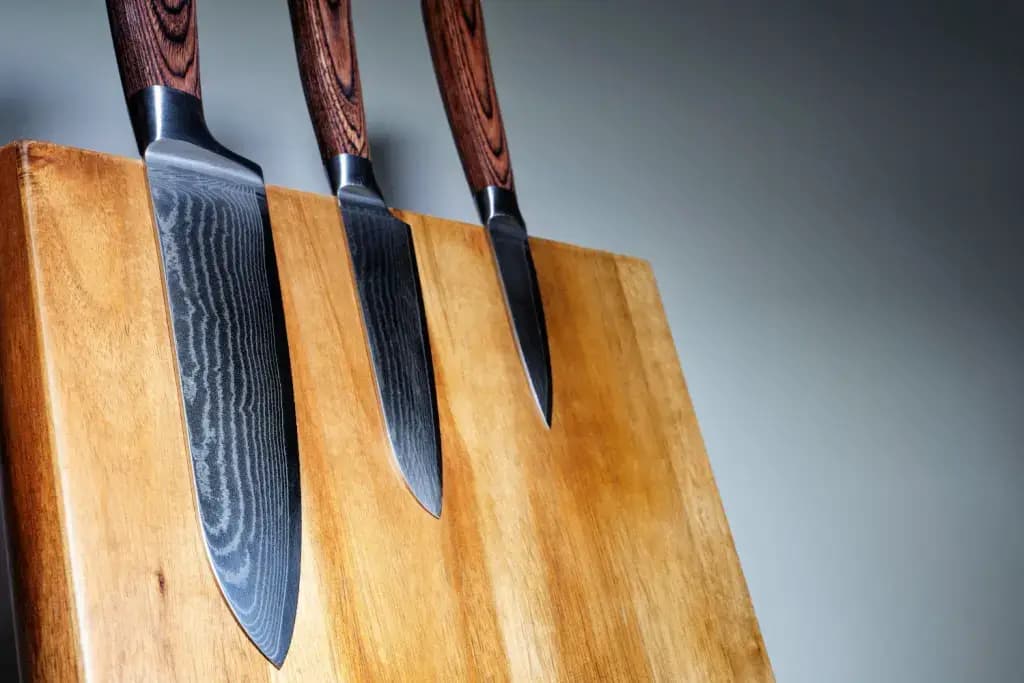
2025 SEPTEMBER 29
.James Lau
Kitchen Knife Safety: Essential Tips for Every Home Cook
Kitchen knives are among the most important tools in cooking, but they also pose a serious risk if used carelessly. Many household injuries occur because knives are not handled, cleaned, or stored correctly.
Safe practices protect the user and anyone else in the kitchen. With the proper techniques, knives can remain efficient tools instead of hazards. Here are some key areas of kitchen knife safety that every home cook should know!
Use the Right Knife for the Task
Choosing the correct knife for the job is one of the most critical safety steps in cooking. Japanese knives are designed for specific purposes. A nakiri, thanks to its straight edge, is ideal for chopping vegetables, while a yanagiba is made for slicing sashimi with long, clean strokes. The santoku works well for everyday tasks involving meat, vegetables, and fish. Using a knife beyond its intended purpose increases the risk of losing control.
Each knife’s design reflects centuries of refinement in Japanese cooking. A deba, for instance, has a thick spine for filleting fish and cutting through small bones, which would be unsafe with a thinner blade. By contrast, a petty knife offers precision for peeling or small garnishes, something larger knives cannot do safely. Matching the right knife to the right food ensures safer handling and better results.
Keep Knives Sharp
A sharp knife may seem more dangerous, but dull knives cause more injuries. When a blade is dull, it requires extra force to cut, making slips more likely. A sharp knife glides through food smoothly, giving the user more control. Regular sharpening or honing keeps blades in a safe condition. Maintaining a sharp edge is one of the simplest ways to improve kitchen safety.

Sharpening can be done at home with a whetstone or by taking knives to a professional service. Honing should be done frequently, while sharpening is needed less often, depending on use. A sharp blade also preserves food quality by cutting cleanly rather than crushing ingredients. Investing time in sharpening extends the lifespan of your knives. Safe cooking begins with a blade that performs as intended.
Practice Proper Cutting Techniques
Safe knife use relies heavily on proper cutting techniques. Always cut on a stable surface like a non-slip cutting board to prevent the knife from sliding. Keep your fingers curled inward, often called the “claw grip,” to protect them from the blade. Cutting should be steady and controlled, not rushed. These habits make slicing safer and more efficient. Practice will make perfect!

Positioning is also essential when working with knives. For specific cuts, keep the tip of the knife in contact with the board, allowing the blade to rock smoothly. Avoid holding food in midair while cutting, as this increases the chance of accidents. Keeping both hands in safe positions ensures more precision. Proper technique reduces injury risks and improves the quality of your cooking.
Are you looking for high-quality knives? Check out ZAKU! ZAKU has authentic knives handmade in Japan for all of your culinary needs!

Focus and Avoid Distractions
Distraction is a significant cause of kitchen knife injuries. Looking away, using a phone, or talking while cutting all reduce focus and increase risks. Knives demand full attention because one slip can lead to severe cuts.
Staying mindful of your movements is especially important when working quickly or preparing large meals. Concentration is one of the best defenses against accidents.

Children and pets should also be kept away when knives are in use. Crowded spaces or sudden movements can break concentration and lead to mishaps. Avoid multitasking, such as stirring a pot while chopping vegetables, as it divides attention. Setting aside time to focus only on knife work makes cooking safer. A distraction-free environment is key to preventing injuries.
Store Knives Safely
Knife safety extends beyond use, as storage is equally important. Leaving knives loose in a drawer creates a hazard whenever someone reaches inside. It also damages the blade as knives knock against other utensils. Proper storage solutions, such as knife blocks, magnetic strips, or protective sheaths, keep knives secure and organized. Safe storage prevents accidents before they happen.

Knife blocks keep blades covered, reducing the risk of accidental cuts. Magnetic strips save space and keep knives visible, but they should be installed safely out of children’s reach. Sheaths are functional for drawer storage, keeping each blade protected. No matter the method, knives should always be placed in dry storage areas to prevent rust. Good storage habits extend knife life and protect everyone in the kitchen.
Teach and Practice Knife Safety at Home
Knife safety is not just about personal use but also about creating a safe kitchen environment. Teaching children and new cooks how to handle knives responsibly is essential. Demonstrating correct techniques and explaining risks builds good habits early. Allowing supervised practice with age-appropriate tools can prepare younger family members for future cooking. Making safety part of kitchen culture benefits everyone.

Even experienced cooks should revisit safety practices. Overconfidence can lead to shortcuts, which often result in accidents. Reviewing proper techniques, sharpening schedules, and safe storage keep skills fresh. Households where everyone knows and follows safety rules experience fewer accidents. Knife safety should be a shared responsibility, not just an individual effort.
How do you stay safe in the kitchen? What tips and tricks do you have to share? Let us know in the comments below!











